#postpartum haemorrhage
Text
5 days post partum
After haemorrhaging, almost dying, having a blood transfusion and having to have my daughter resuscitated. We are doing good.
Breast feeding is getting easier and adjusting to having three kids is going okay, I’m very tired and I can feel a little bit of postpartum depression creeping around the corner but over all I am enjoying being home with my littles
26 notes
·
View notes
Text

Dr. Haya Hijazi, a gynecologist and obstetrician in Gaza, has spoken to Al Jazeera’s The Stream about the dire situation of pregnant women in the besieged Strip.
“The cases that undergo hysterectomy due to postpartum haemorrhages are increasing, because there is no medical aid to treat them and to deal with them,” she said.
“Postpartum depression is also increasing,” she added, noting that in one case a 23-year-old woman was forced to travel to numerous hospitals only to be turned down as the facilities were strained by bombardment. Hijazi said the girl died from sepsis.
-- "Obstetrician says pregnant women in Gaza dying from complications in greater numbers" by Linah Alsaafin and Alma Milisic for Al Jazeera, 25 Jan 2024 21:00 GMT
8 notes
·
View notes
Text
HERE'S MY LIGHT BULB(ish) THOUGHTS on shauna's twilight breaking dawn-esque dream sequence.
we know shauna wants her baby, is scared about dying and raising this kid alone in the wilderness. so what if during her blackout, her subconscious is manifesting all of her biggest worries and insecurities?
she's worried about being an ill-prepared young mother who can barely feed herself in the wilderness? she dreams of being unable to breastfeed her son and he cries from hunger pangs. she dreams of lottie feeding her son and singing lullabies to him. the one person she had been vocal about having questionable advances towards her baby.
shauna's rightfully nervous and scared about entering motherhood alone. in her dream, tai UNCHARACTERISTICALLY leaves shauna to her own devices - something tai, renowned shauna ride and die, would NEVER do. tai dumps the cot in the room, throws a judgemental look at shauna then leaves without a word. she is alone.
when shauna is finally able to provide for her kid, it's after pouring out her heart for him to hear; telling him how much she loves him, how much she wants for both of them to make it out alive, how much she wants him. her vulnerability and honesty was rewarded with the team eating her baby. is this perhaps a manifestation of her guilt of participating in the jackiefruit feast? that she will be punished for this sin by losing another person she loves dearly?
BUT shauna's dream is also offputtingly odd and creepy. the first thing she wakes up to is jackie's voice. then she opens her eyes to the girls beaming and smiling. it's creepy and eerily similar to the "we love you jackie" scene in jackie's death dream sequence. her friends, especially tai and lottie are behaving out of character. so did she nearly die from her placenta previa and postpartum haemorrhage situation and this was her obligatory near death hallucination bit?
#wheres laura lee in the hallucination bit you ask? she was the vibes in the room#also that boy was too healthy and big for someone whose mother exclusively consumed stick water and 4cm of meat#i feel so bad for shauna#she probably really does love callie but the wilderness has taken so much from her that she isnt really sure how to be a good mom#having a baby to save your shotgun marriage when you lost your firstborn#she mustve been so scared#shauna shipman we know you love callie#but perhaps dont encourage her to do crimes#yj spoilers#yj#shauna shipman
13 notes
·
View notes
Text
The Lovell Family: 1554 (Part Two)

The evening after the funeral was tough for the Lovell’s, as was only to be expected. But this was not to be the end of the family’s misfortunes.



Moll had been uncharacteristically withdrawn for most of the afternoon. William had chalked it down to grief, until he found her collapsed on the floor of the kitchen. She had suffered a postpartum haemorrhage.
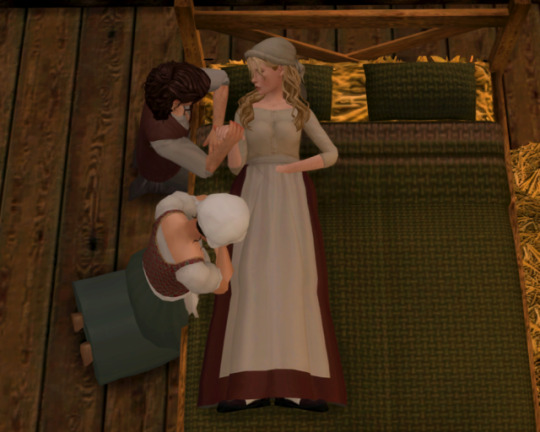

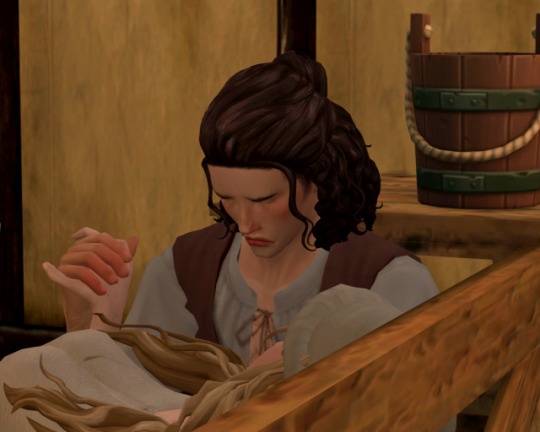
He called Annie and the priest as fast as he could. She was slipping in an out of conciousness, and they both knew that it wouldn’t be long before she was gone. Her last request was for William to ensure Frances grew up happy.

By the morning she was gone. William was in shock. He almost couldn’t believe that he had lost everything so quickly. But he had. He was now a widower, and Frances was without a mother.
#william lovell#moll lovell#annie barlow#frances lovell#tw death#old post#lovell family#lovell gen one
3 notes
·
View notes
Text
Basic Emergency Obstetric and Newborn Care (BEONC) Sites in Nepal
Basic emergency obstetric and newborn care (BEONC) covers the management of pregnancy complications by assisted vaginal delivery (vacuum or forceps), the manual removal of placenta, the removal of retained products of the abortion (manual vacuum aspiration), and the administration of parenteral drugs (for postpartum haemorrhage, infection and pre-eclampsia, and eclampsia) and the resuscitation of…

View On WordPress
#BEONC#BEONC Service#Health in Data#Maternal and Newborn Care#Maternal Mortality#Nepal Health Facts Sheet#Public Health
0 notes
Text
1 note
·
View note
Text
Video: Nigerian don shares Postpartum Haemorrhage treatment at UNGA
http://dlvr.it/SwXfXw
0 notes
Text
Hypothyroidism: Symptoms And Effects During Pregnancy
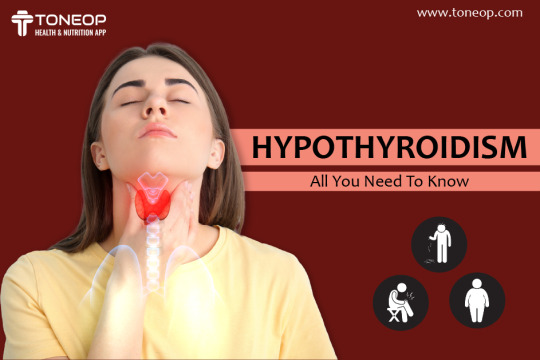
Significant physiological stress are put on the mother and the foetus when the pregnancy is carried to term. When endocrine disorders, such as hypothyroidism, are present during pregnancy, the risk of harm to the mother and the unborn child is significantly increased.
There has been a fair amount of focus placed on the negative effects of hypothyroidism on the developing foetus. However, there is a gradual shift toward examining the negative effects of this disorder on the mother. It is also unknown how much antibody positivity determines the outcome for a woman with a normal thyroid. Due to this, diagnosing and treating hypothyroidism in pregnant women as quickly as possible is extremely important.
What Causes Hypothyroidism And How Common Is It Among Pregnant Women?
The most common cause of pregnancy and hypothyroidism in women in some regions of India is a lack of iodine in the diet. In regions with adequate levels of iodine, autoimmune thyroiditis is the most common cause of goitre.
There is a possibility that women who had subclinical hypothyroidism before becoming pregnant will develop overt hypothyroidism.
Approximately two to three out of every one hundred pregnancies are affected by Hashimoto's disease, making it the most likely cause of hypothyroidism in pregnancy.
The autoimmune disease Hashimoto affects the thyroid gland. Antibodies produced by the immune system attack the thyroid, leading to inflammation and damage that reduces the gland's ability to produce thyroid hormones. This condition is known as autoimmune thyroiditis.
Symptoms Of Hypothyroidism
ToneOp enlists the symptoms of hypothyroidism, which are often subtle and develop gradually over time. The following is a list of the most common symptoms of hypothyroidism:
Fatigue
Intolerance to cold temperatures
Swelling of the face
Gain in body weight
Constipation
Alterations to the skin and hair, such as thinning eyebrows and dry skin on the face
Carpal tunnel syndrome (hand tingling or pain)
Slow and irregular heartbeat
Muscle pain
Having trouble concentrating on things
Intermenstrual bleeding that occurs at unpredictable intervals
Pregnant women frequently experience the same symptoms of hypothyroidism as other patients with this condition.
The following are some of the symptoms:
Extreme tiredness
Having difficulty fending off colds
Muscle cramps
Constipation of a severe nature
Memory and concentration issues are plaguing you
Impacts Of Hypothyroidism On Pregnant Women
During the first few months of pregnancy, the foetus depends on the mother for its supply of thyroid hormones. Thyroid hormones significantly influence the development and growth of the foetus’s brain. Hypothyroidism in the mother can have long-term effects on the developing foetus. It is possible that an untreated case of hypothyroidism during pregnancy could result in
Preeclampsia (dangerous rise in blood pressure in late pregnancy) (a dangerous rise in blood pressure in late pregnancy)
Anaemia
Miscarriage
Underweighted birth weight
Stillbirth
Congestive heart failure occurs very infrequently.
People who suffer from severe hypothyroidism are more likely to experience these problems.
Hypothyroidism And The Complications During Pregnancy
As the foetus cannot produce thyroid hormones in the first trimester of pregnancy, it must rely on the thyroid hormones produced by the mother for proper neurodevelopment. Hypothyroidism is a potentially life-threatening condition for pregnant women; if left untreated, it can lead to complications for both the mother and the unborn child.
Complications that can affect the mother include high blood pressure, diabetes, abruption of the placenta, and postpartum haemorrhage.
Complications during pregnancy include premature birth, low birth weight, stillbirths, and even abortions.
A foetus's neurocognitive development can also be negatively impacted by overt hypothyroidism.
Subclinical hypothyroidism has the potential to also have detrimental effects. For instance, children whose mothers have untreated hypothyroidism are more likely to have low IQs and learning disabilities than children whose mothers have the condition treated.
Treatment Of Hypothyroidism For Women Who Are Pregnant
Levothyroxine should be given with a serum TSH target of less than 2.5 mIU per L when treating hypothyroidism in pregnant women. This is recommended by the American Thyroid Association.
Serum TSH levels should be checked in pregnant women who are being treated for hypothyroidism at 4 to 6 weeks of pregnancy, then every 4 to 6 weeks until 20 weeks of pregnancy and on a stable medication dosage, then once more at 24 to 28 weeks gestation and once more at 32 to 34 weeks gestation.
In order to treat the condition, levothyroxine supplements are typically taken. In a clinical trial involving 131 women with positive TPO antibodies (euthyroidism or subclinical hypothyroidism) who were randomly assigned to receive levothyroxine medication or no treatment, the levothyroxine treatment resulted in a significant reduction in the rate of premature delivery.
The Bottom Line
If you are actively trying to conceive a child, have a history of pregnancy complications and suffer from an autoimmune or thyroid condition. In that case, your physician can assist you in planning a healthy pregnancy and order any necessary tests.
Your chances of being successful are directly proportional to how quickly you get started planning. In addition, pay attention to the importance of maintaining a healthy diet, engaging in regular physical activity, and finding ways to reduce stress.
0 notes
Text
POSTPARTUM BLEEDING AND MATERNITY PAD
Bleeding after a you give birth to a baby is said to be lochia. The blood flow will be heavy, will be as bright red and sometimes it may also have blood clots. In some cases, the blood clot may be comparatively larger than the 50piece coin and it can be an indication of a serious problem known as PPH(postpartum haemorrhage).
Lochia discharge may be lessened in 6 to 12 hours since you were in resting condition after she have given birth to the child. But if you have not taken rest during the first 6 to 12 hours after giving birth you may notice a heavy flow of blood because the blood that stays inside the body will start flowing when you change your body position from a static resting phase. Sometimes blood may form into small clots if you were lying down for while without any movements.
If you have given birth to the first baby and if you have any tampons past it may result in heavy flow and it is also not advisable to use tampons for 7 to 10 days post-delivery because it may have a serious risk of infection and you can use tampons as usual once you get the postpartum periods which generally happen 6 weeks after delivery.
In the hospital, they use a small disposable sheet over the bed to avoid the bed to stained. And If u were given birth at home then you need disposal sheets a towel above or below it to prevent stains in the bed or You can get waterproof bedcovers.
You may also likely to have a few leaks of blood in the first few days. You need to use a Maternity pad which will make to feel dry for a long time and it has antibacterial properties which heal. Remember one thing every time during every pad change wash your hands with handwash liquid and make sure to check your hands were clean to protect against infection.
Have a bath with warm water at least once a day and don’t use soaps and shower gels for 7 to 14 days post-delivery wounds need time to heal there. If u were not able to bathe daily you should at least wash the area with a cup of warm water before every pad change. warm water usage will disinfect and promote natural healing.
After 6 to 7 days the blood discharge will turn from bright red to pink colour and it will also be watery. After 14 to 21 days the blood discharge will turn in brown.
You may also notice at the end of the first week after giving birth blood discharge may again become heavier for 1 or 2 days. This happens because you may lose tissues that will again be formed where the placenta was fond of and don’t worry about it
If you breastfeed your baby the blood discharge may be seen as heavier. Whenever you feed a baby you will start to produce a hormone called oxytocin. Oxytocin helps in tightening the womb so it forces the lochia inside to leak so you may experience heavier blood release. In some cases after 7 to 10 you may be able to switch from a maternity pad to a sanitary pad. And about 30 to 35 days you can Switch from sanitary pads to panty liners.
How many Maternity pad will be needed once you give birth to a baby?
->You need at least 4 to 5 packs of maternity pads which consists of 8 pieces.
->Because you will need to change fresh maternity pad every 2 or 3 hours post-delivery. It will reduce 4 to 5 hours interval in next 2 to 3 days.
->kindly plan to buy maternity pads rather than prefer buying and using sanitary pads.
->maternity pads are longer, softer, free from chemical processing etc…
To know more: https://theputchi.com/blogs/birth-of-putchi/postpartum-bleeding-and-maternity-pad

0 notes
Link
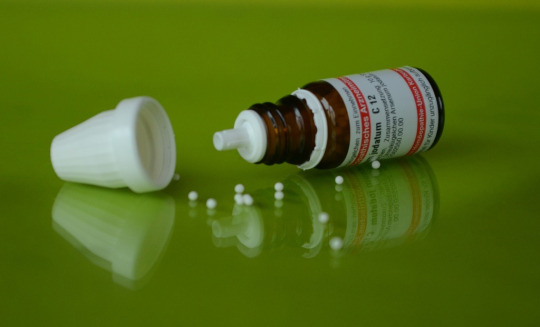
Homeopathic treatment can be given based on the constitutional tendency to hemorrhage, the cause and symptoms along with corrective therapy for the lost blood.
0 notes
Text
National Safe Motherhood Day 2023: How Does Sleeping Posture Affect Baby's Health?
NSMD 2023: National Safe Motherhood Day is observed every year in India on April 11 to raise awareness about the care and treatment required for new or soon-to-be mothers. Since postpartum haemorrhage is one of the major factors responsible for 25% of all maternal deaths. It is responsible for 25% of all maternal deaths. In India, PPH incidence in India is 2%-4% following vaginal delivery and 6%…
View On WordPress
0 notes
Text
instagram
How to Check for Postpartum Haemorrhaging?
Bleeding after giving birth is a common occurrence. However, an aggressive blood flow is not normal. Postpartum haemorrhage (PPH), where women experience excessive bleeding after giving birth, is the name given to this condition.
It is a rare condition that mostly affects women who have had caesarean deliveries. Other than heavy bleeding, some of its symptoms include -
➡️ Nausea or vomiting
➡️Abdominal or pelvic pain
➡️ Increased heart rate
➡️ Blurry vision
➡️ Dizziness
0 notes
Text
instagram
How to Check for Postpartum Haemorrhaging?
Bleeding after giving birth is a common occurrence. However, an aggressive blood flow is not normal. Postpartum haemorrhage (PPH), where women experience excessive bleeding after giving birth, is the name given to this condition.
It is a rare condition that mostly affects women who have had caesarean deliveries. Other than heavy bleeding, some of its symptoms include -
➡️ Nausea or vomiting
➡️ Abdominal or pelvic pain
➡️ Increased heart rate
➡️ Blurry vision
➡️ Dizziness
0 notes
Text
instagram
How to Check for Postpartum Haemorrhaging?
Bleeding after giving birth is a common occurrence. However, an aggressive blood flow is not normal. Postpartum haemorrhage (PPH), where women experience excessive bleeding after giving birth, is the name given to this condition.
It is a rare condition that mostly affects women who have had caesarean deliveries. Other than heavy bleeding, some of its symptoms include -
➡️ Nausea or vomiting
➡️ Abdominal or pelvic pain
➡️ Increased heart rate
➡️ Blurry vision
➡️ Dizziness
0 notes
Text
instagram
How to Check for Postpartum Haemorrhaging?
Bleeding after giving birth is a common occurrence. However, an aggressive blood flow is not normal. Postpartum haemorrhage (PPH), where women experience excessive bleeding after giving birth, is the name given to this condition.
It is a rare condition that mostly affects women who have had caesarean deliveries. Other than heavy bleeding, some of its symptoms include -
➡️ Nausea or vomiting
➡️ Abdominal or pelvic pain
➡️ Increased heart rate
➡️ Blurry vision
➡️ Dizziness
0 notes
Text
The weight of the world, that lies on the shoulder of child & Maternal Health
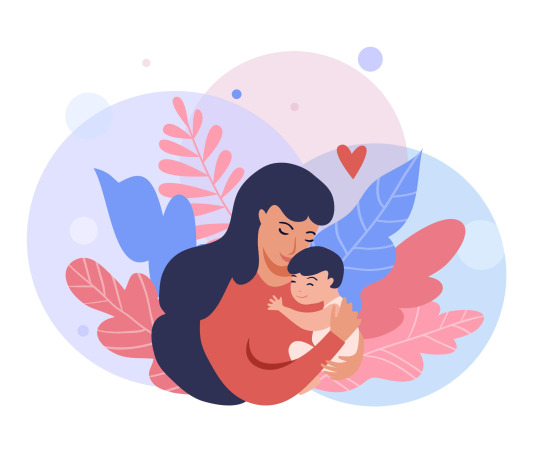
In the midst of a precarious environment a mother will be nursing her baby with the dreams, hopes, and prayers of a life away. A life for the betterment of herself and a brighter future for baby. Through the thick choking mist of her situation, she can feel the pain creep up inside of her and the tiredness that makes her weary through her bones. But tomorrow is another day she and alas the show must go on. So she will get up and get back to work, saying in the future “it’ll be different, this will be different, my life will be different.”
The mother, the supporter, the warrior, the shoulder we cry on, the backbone of our family, our superwomen, our first love. The provider of the continuum bringing us generations and shaping society. This dynamic illustration of a mother encapsulates how important maternal care is.

Health of women throughout pregnancy, childbirth, and the postpartum period is referred to as maternal health. The importance of maternal health is uncontested, and yet still, according to the World Health Organisation, about 287 000 women died during and following pregnancy and childbirth in 2020.
In our South African context, we see the drivers of maternal mortality as HIV-related infections, hypertensive disorders of pregnancy and obstetric haemorrhage. (Maswime & Chauke, 2022) The concerning reality is that the levels of care varies in public healthcare facilities and service delivery is poor as the high levels of patients do not correspond with the limited healthcare professionals. One should also not mention maternal care in a South African context without describing, physical and mental abuse. An abusive environment could never be anything but a danger to maternal care. The reality worsens when we consider the statistics behind domestic violence in South Africa. A startling one-third or possibly up to 50% of women and girls in South Africa have experienced physical or sexual intimate partner abuse, compared to a global average of 27%. (Brits, 2022) Add this to the socioeconomic factors that could hinder mothers having access to health care, and we have a tragedy in front of us.
After framing the detriments to maternal health, one can deduce that in South Africa maternal health is poor, and yet, according to Maternal & Child Health, n.d., the availability of excellent maternal healthcare not only guarantees a mother's health, but also that of her unborn child and the other members of her household because her good health contributes to their wellbeing.
Maternal health isn’t just important to society, it shapes our society, as it facilitates the next generation of healthy developing children. Our mothers create us, and we grow up to give back to society and create our own children that can contribute. Good maternal health is what enables our mothers to nurture us healthily and create healthy, safe environments for us to develop, learn, grow and later, work to give back. A healthy society is sustained and protected by our country’s mothers and their children.
Child health would be described as the basis of growth and development, which encompasses mental health, social and emotional development, and cognitive development. (Your Child’s Health | Childcare.gov, n.d.) Children are dependent on their patents and role models as figured to trust for guidance and care. This creates a healthy, safe environment for them to grow. Good maternal health is interlinked with child health because they would have a directly proportionate relationship in that good maternal health equates good child health.
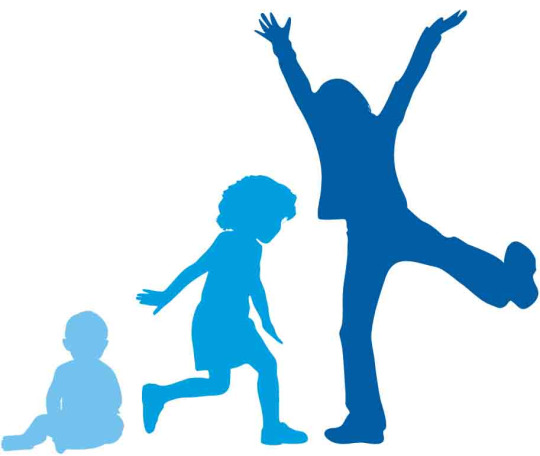
In a South African context the detriments to a child under 5’s health would be problems related to premature birth, pneumonia, birth asphyxia, diarrhea, and malaria. Malnutrition is a factor in around 45% of all child fatalities. (Child Health, 2023) The horrific part of it is that according to Child Health, 2023, more than half of these infant fatalities are caused by ailments that may be avoided or cured with access to straightforward, inexpensive measures.
Child health is integral because the foundation is laid for a healthy adulthood that is less likely to include chronic health issues like overweight/obesity, poor oral health, diabetes, and other chronic physical and mental health problems when children's health is nurtured and supported and physical and mental abuse and other intentional childhood trauma is not present. (First Things First, 2007)
What child health comes down to is children being healthy and able to get an adequate education to be able to give the children the best introduction in their life. The hope is then that this will later serve to create the next generation of responsible and successful adults.
Occupational therapy is a profession that aims to clients holistically. And a community occupational therapy practitioner particularly aims to consider a client as a person, that comes with complexities, and take into account client’s context, not just them being treated in a clinic and then going away, but them in their real lives and in their real homes. occupational therapy really strives to double down on treating children and assessing holistic development. The importance of child health in the community then means that the average occupational therapy community practitioner must consider the child social and physical environment as well as involve the mom closely in therapy for the child and for the mother to maintain a healthy therapeutic bond, and assess maternal health. Establishment of the importance of child health and maternal health means that occupational therapy needs to be constantly engaging in health promotion for mothers to understand red flags for the child and as well red flags for themselves, to create awareness, so that even though the community practitioner would bring healthcare to the people for the people, it can be ensured that these “people” would understand the importance come on and participate for their benefit.
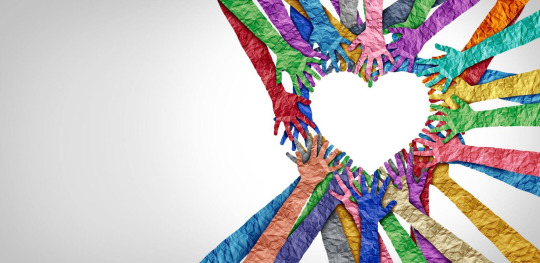
So one can then infer that in an ideal world, if we were living in a vacuum, and mothers had easy accessibility to healthcare, the socioeconomic factors that stifle the accessibility of health care wouldn't be crippling, the domestic violence, and substance abuse statistics were at their lowest, the maternal mortality rate wouldn't be high, and all children can be assessed and treated at an early stage, then the next generation of children will be raised in ideal environments. They would develop healthily, the foundation for adulthood would be strong, the word hope can be washed away and then we will be raising the create the next generation of responsible and successful adults.
But alas this isn’t an ideal world, and we definitely do not live in a vacuum. We live in South Africa. A country of grandeur and tragedy. And this tragedy is seen especially in the community of Kenville, Kwa Zulu-Natal. A community in desperately in need of basic necessities. The lifestyle within the community is difficult, seems as if though every direction a child could walk in one would stumble upon the possibility of a future of teenage pregnancy, a future of teenage substance abuse, being bullied, being crippled under the weight of having a family without any breadwinner or any income, and feeling as if though you have to leave school in order to support your family.
In any community the importance of maternal health as well as child health is uncontested. The potential in the youth for the contribution to the community is rich and child health is nurtured through good maternal health.
And so that mother, with the weight of the world on her shoulder’s, and the child’s potential and future, that also holds the weight of the world, continues to stand strong, bearing the daggers of the pandemic, and the spears from the environment. Defining our society, defining our home.
References
Brits, E. (2022, June 14). South Africa’s staggering intimate partner violence stats aren’t shifting – here’s what we can do about it. Daily Maverick. https://www.dailymaverick.co.za/article/2022-06-14-intimate-partner-violence-in-s-africa-the-staggering-stats-and-the-solutions/
2. Child health. (2023, March 2). WHO | Regional Office for Africa. https://www.afro.who.int/health-topics/child-health
3. First Things First. (2007, October). Child health - definition. Retrieved March 2, 2023, from http://www.azftf.gov/WhoWeAre/Board/Documents/Program%20Committee/Health/January%2013,%202011%20Meeting%20-%20Health/07%20Child%20Health%20Definition%20Recommendation.pdf
Maswime, S., & Chauke, L. (2022, May 4). Most maternal deaths are preventable: how to improve outcomes in South Africa. The Conversation. https://theconversation.com/most-maternal-deaths-are-preventable-how-to-improve-outcomes-in-south-africa-181282
Maternal & child health. (n.d.). Healthpovertyaction. Retrieved March 2, 2023, from https://www.healthpovertyaction.org/how-poverty-is-created/women-girls/maternal-child-health/#:~:text=Not%20only%20does%20access%20to,the%20rest%20of%20her%20family.
Maternal health. (2019, September 23). https://www.who.int/health-topics/maternal-health
Your Child’s Health | Childcare.gov. (n.d.). https://childcare.gov/consumer-education/your-childs-health
0 notes